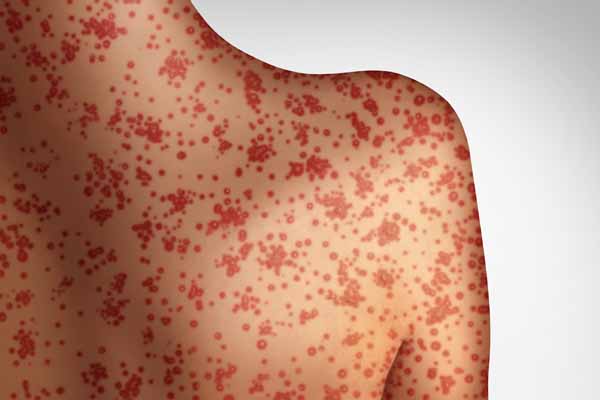
A recent outbreak of measles among unvaccinated children in Ohio prompted the Texas Department of State and Health Services (DSHS) to issue a health advisory with guidance for physicians and other health care professionals should they encounter the disease.
As of late December 2022, 82 confirmed cases of measles have been reported in Ohio since the start of that outbreak in November, with 32 of those cases requiring hospitalization. Seventy-four cases (90%) were among unvaccinated children, with most cases (66%) occurring in children between the ages of one and five-years-old. There have been no reported deaths.
Although as of this writing no confirmed cases of measles have been reported in Texas since 2019, nearly 2.5% of state kindergartens held a conscientious exemption for the MMR vaccine – which guards against measles, mumps, and rubella – for the 2021-2022 school year, per DSHS. An additional 3% of children were not up to date for that vaccination series, and those numbers don’t include students in homeschool settings, who may be more likely to be unvaccinated.
The Centers for Disease Control (CDC) Advisory Committee on Immunization Practices recommends two doses of the MMR vaccine for children, with the first dose at ages 12 to 15 months, and the second dose at ages four to six years.
The MMR vaccine may prevent patients six months or older from contracting measles if given within 72 hours of exposure, according to DSHS. However, the best protection against measles and other preventable diseases is staying up to date on routine immunizations.
One dose of MMR is 93% effective against measles, 78% effective against mumps, and 97% effective against rubella, CDC says. Two doses of MMR vaccine are 97% effective against measles and 88% effective against mumps.
DSHS’s advisory includes thorough guidance on infection control measures, diagnostic testing, and how long a patient should stay away from school, work, or other group settings.
Physicians who treat patients susceptible to measles should alert their local health department or DSHS regional office immediately if they suspect an infection. Measles signs and symptoms include:
- A fever at or above 101°F (38.3°C).
- Generalized maculopapular rash (which often begins at the hairline or scalp and progresses down the body) lasting three days.
- Cough, runny nose, or conjunctivitis.
DSHS recommends reporting while the patient is present in the clinical setting to facilitate testing and initiate a public health investigation as soon as possible.
Alisa Pierce
Reporter, Division of Communications and Marketing
(512) 370-1469